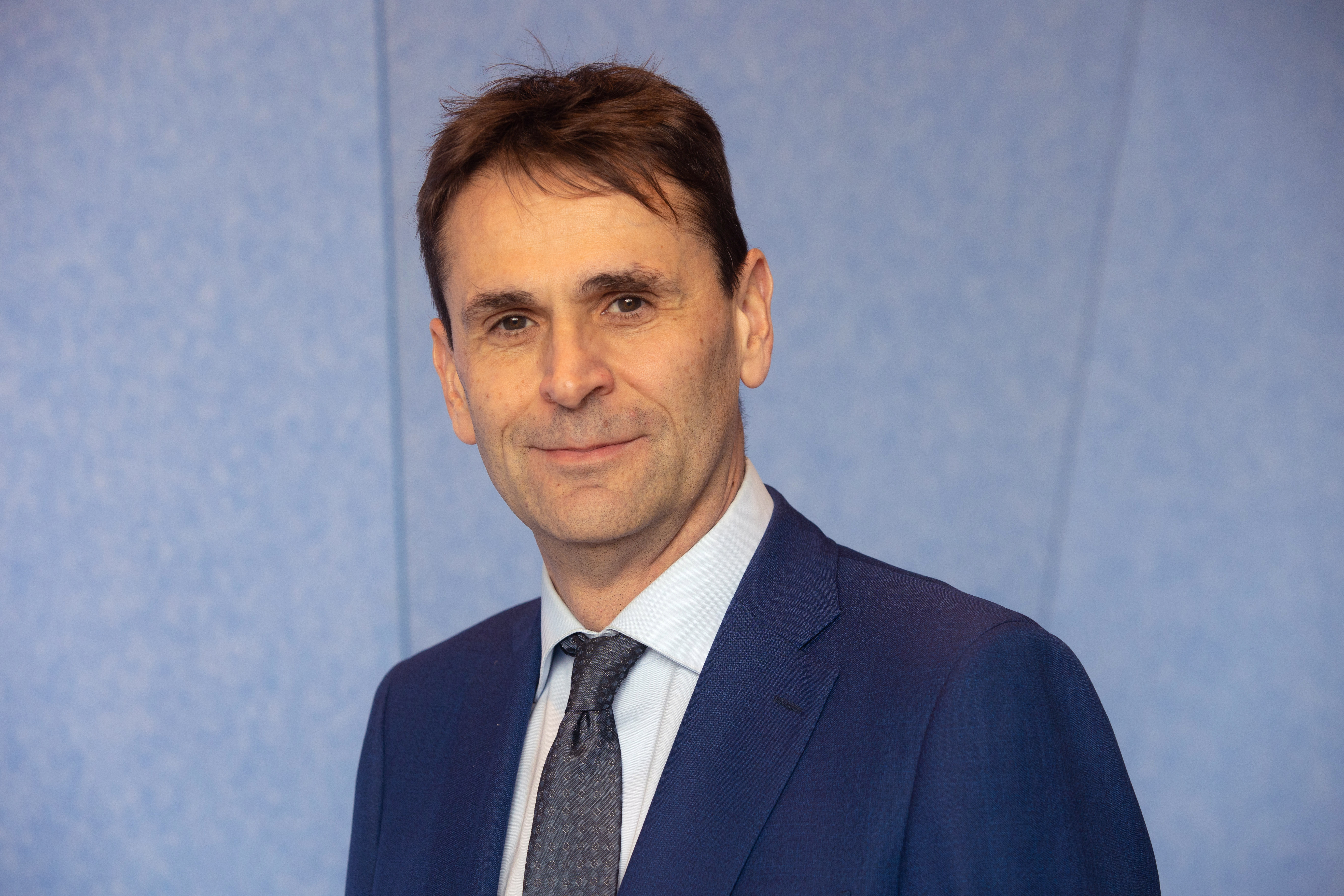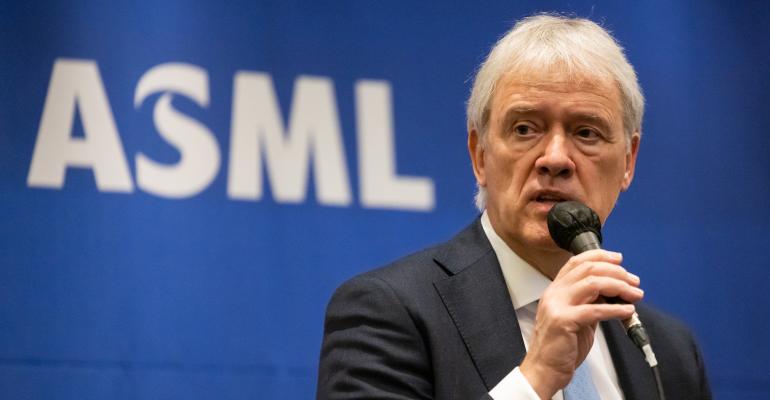(Bloomberg) -- When Chief Executive Officer Peter Wennink took over ASML Holding NV a little more than a decade ago, it was a relative minnow based in the sleepy Dutch town of Veldhoven.
On Wednesday, he retires from the helm of Europe’s most valuable technology company. Wennink, 66, transformed ASML into the only source of machinery needed to make the world’s most advanced chips, which has landed the company in the middle of the geopolitical struggle between the US and China.

Peter Wennink
Now his successor Christophe Fouquet, previously ASML’s chief business officer, will have to navigate the complex relationship that has put the company’s Chinese exports in the crosshairs of both the Biden and Trump administrations.
Wennink’s success, fueled by the introduction of the company’s state-of-the-art extreme ultraviolet lithography systems in 2016, boosted ASML’s value from €27 billion ($29 billion) to €333 billion, more than twice that of its client Intel Corp.
“Peter has been a part of an extraordinary journey where the company overtook its Japanese competitors with the launch of the Twinscan, cemented that leadership with immersion and then developed an unassailable lead with EUV,” Jefferies analyst Janardan Menon said. “He leaves the company as a monopoly in high-end lithography systems.”
The world’s top semiconductor makers from Taiwan Semiconductor Manufacturing Corp. to Samsung Electronics Co. depend on ASML’s EUV machines, which are the size of a bus and can cost more than $200 million apiece, to produce the most-advanced chips that power everything from smartphones to military technology.
China -- the company’s biggest market -- also needs ASML. Its essential role in semiconductor production has made ASML central to Washington’s push to limit Beijing’s ability to produce cutting-edge chips.
While Beijing has always been banned from buying EUV equipment, starting this year the Dutch government placed new restrictions on exports of ASML’s immersion deep ultraviolet lithography machines, its second-most capable category, to China.
Even before the ban took effect, US officials reached out to ASML to ask them to immediately halt pre-scheduled shipments of some of the machines to Chinese customers, Bloomberg News reported earlier this year. The company expects as much as 15% of China sales in 2024 will be affected by the export control measures.
There is some evidence the restrictions may have come too late to stem Chinese advances. Huawei Technologies Co. produced a smartphone to rival Apple Inc.’s iPhone last year using chips made with ASML’s immersion lithography machines in combination with tools from two US suppliers, Bloomberg News reported in October.
Beijing has made technological self-sufficiency a national priority and Huawei’s efforts to advance domestic chip design and manufacture have received government backing.
Still, China still cannot entirely replace certain foreign components and equipment required for cutting-edge products like semiconductors. Facing the bans, industry there has focused on buying up less sophisticated ASML kits to make more mature types of chips in a bid to dominate that corner of the market.
Wennink fought hard to counter the US push for more restrictions against China. In an interview with Bloomberg News last year, he warned that US-led export control measures against China could eventually push Beijing to successfully develop advanced chipmaking machines.
“The laws of physics in China are the same as here,” Wennink said. “The more you put them under pressure, the more likely it is that they will double up their efforts.”
It will now be up to Fouquet, 50, to lobby for ASML’s interests. Early indications are that the 15-year company veteran will stay the course set by Wennink. He takes over at a time of uncustomary softness at ASML, which last week forecast second-quarter sales below expectations.

Christophe Fouquet
Longer term, the company is confident that it will benefit from a global trend to seek to localize semiconductor production. Countries from Germany to the US have committed tens of billions of dollars in subsidies for chipmakers to build new wafer fabrication facilities, or fabs, in an attempt to ensure domestic supplies.
Fouquet, a French national, will also need to adjust to the politics of running the Netherlands’ most valuable company.
Wennink called the Netherlands “fat, dumb and happy” in his farewell interview with Management Scope magazine. “It may not look like it from the outside, but on the inside ASML remains a very Dutch company.”
After local media reported this year that ASML was considering expanding abroad, the government hastily set up a task force codenamed “Beethoven” to keep it anchored in the Eindhoven region. In March, it committed €2.5 billion to infrastructure and education spending in the area.
Ahead of his retirement, Wennink has enjoyed something of a victory lap. Prime Minister Mark Rutte awarded him an honor recognizing services to Dutch society earlier this month.
In his final act on Monday, Wennink signed a letter of intent with Eindhoven to explore expansion. It will be up to Fouquet to seal the deal as ASML aims to double its capacity by 2030 as it anticipates surging demand from the semiconductor sector to meet the boom in generative artificial intelligence.
Wennink worked at Deloitte for over two decades in the Netherlands before joining ASML as chief financial officer in 1999. Upon retirement, he won’t have any role at ASML but should remain a presence in the Dutch corporate world.
On Thursday, he joins the supervisory board of Amsterdam-based Heineken NV, the world’s second-biggest brewer.




